[From Unsplash]
I came to reading vast swathes of children’s books as an adult. I’ve been privileged to work with schools, libraries, and children’s publishing for 12 years now and continue to read my way through it all.
Growing up in an India before the dawn of Amazon.in, I’d navigated the bulrushes of all the children’s books that the ’90s had to offer—Tinkle, Amar Chitra Katha, Chacha Chaudhary, Gokulam magazine (IYKYK), graduating to Enid Blyton, Nancy Drew-Hardy Boys-Sweet Valley High. I flitted between these and the classics that I found in my grandfather’s cupboard on summer holidays.
I found some gems in there but I loved Louisa May Alcott’s Little Men first, and then made my way back to Little Women because I wanted to know what the March sisters had been like as children. When I read about Jo March, her struggles to be heard, to stand on her own feet, to curb her patience, her burning desire to want to write and be her own person—I felt seen.
However, for me as an adolescent, those experiences were few and far between. While it did nothing to dim the giddy excitement of stepping into the musty interiors of Murugan Lending Library in Chennai, all set to browse the handbound volumes of books upon books on the first day of the summer holidays, I went through it in the anticipation of finding another character like Jo.
In his recent book, The Haunted Wood: A History of Childhood Reading, Sam Leith, literary editor, The Spectator, holds that children’s books are more complex than they are often given credit for, as they create a space in which an adult writer, a child reader, and an adult re-reader come together. When parents read with their children those books that they enjoyed when they were once young, they come away from the experience transformed, having taken a walk down the past, while getting a peek into the future at the same time.
Children and young adults today have a feast of options laid out for them; a summer of reading available at the click of a button. Here are a few books that children and parents are likely to enjoy exploring, either together or to each one’s own:
For 5-8 year olds
I Want to Be by Anushka Ravishankar; illustrated by Rathna Ramanathan; published by Tara Books
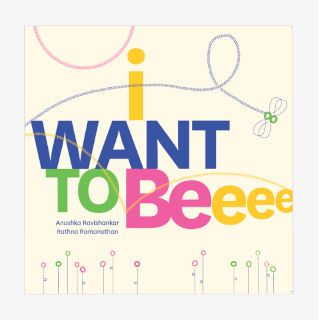
This is a book that creates illustrations from typography, where the words take on the shape of the meaning they convey, in a fun, thoughtful manner. It is likely to encourage children to read closely, wonder, and read again—to see how the meaning of the rhyming text changes when the focus of the reading shifts from the text to the illustration to viewing the two together.
Take this bit of text for instance, and an illustration that concludes the section:
I want to be an elephant
Or a packing trunk
Or maybe something smaller
Like the big toe of a monk
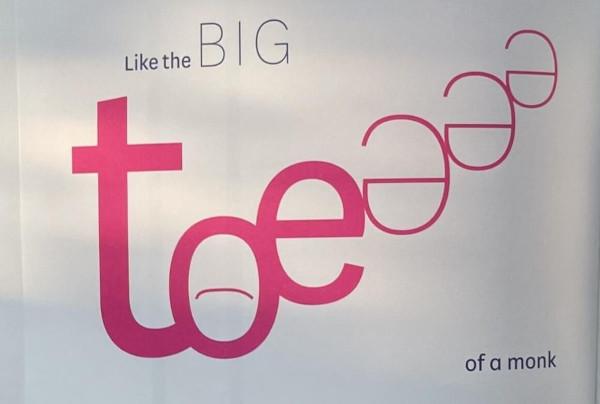
The book moves from references that are familiar, into nonsense verse, in trademark Anusha Ravishankar-style, but makes its way back to the reader, with a smile, as the best children’s books often do.
Milo Imagines the World by Matt de la Pena; illustrated by Christian Robinson; published by G.P. Putnam’s Sons Books for Young Readers
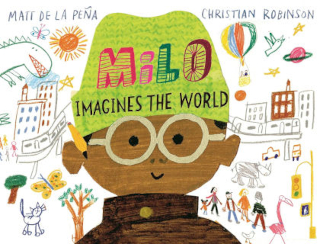
This book tells the story of a boy named Milo who rides the subway with his sister. He draws pictures of the people he sees on the train, and imagines their lives when they step off. As the ride progresses, and he steps off the train, he comes upon new information that prompts Milo to revisit and re-evaluate his choices.
From an author who attended college on a full athletic scholarship for basketball and then went on to win the Newbery Medal (one of most prestigious awards for children's literature in the US) many years later, this is a book that is nothing short of stunning. Christian Robinson’s distinctive illustration style is a great complement to de la Pena’s assured writing.
From the atmospheric start of the story, look at this description of Milo’s observations on the train:
The whiskered man beside Milo has a face of concentration.
A businessman has a blank, lonely face.
The wedding-dressed woman near the far door has a face made out of light, while the dog peeking out of her handbag has no face at all, just a long, lolling tongue.
For 9-12 year olds
PNK Panicker’s Ghost Stories by Suresh Eriyat; published by Tulika Books
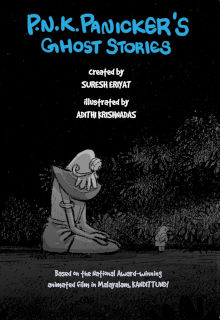
This collection of stories is an adaptation of the national award-winning short film Kandittund! The writer, Suresh Eriyat, who founded the animation studio Studio Eeksaurus, and is considered a doyen in the field of animation in India, worked with his colleague Adithi Krishnadas on the illustrations for the book.
The collection is based on the exploits of Suresh’s 93-year-old father Pazhumadathil Narayana Panicker, who loves to string together bits of stories, folklore, and his own imagination, to spin tales about mystical beings that are replete with detail, leading one to believe in them with utter conviction.
Out come the stories of the Eenampeechi (a scaly creature that obsessively collects raw mangoes to use as bait for pregnant women), the Arukola (the spirit of a man who has died an unnatural death, lurking around bridges, letting out the most blood-curdling screams), and the Kutti Chathan (little demon hitmen who can be bought off with fresh fish or jackfruit), among others.
With black and white illustrations that leap off the page, this book—dubbed an “instruction manual for ghosts”—comprises a set of stories that are amusing, mildly grisly, suspenseful, and thoroughly engaging.
Chronicles of a Lizard Nobody by Patrick Ness; illustrated by Tim Miller; published by Walker Books

The author, Patrick Ness, is well known for his dark, brooding, luminous, and tender writing for young adults. He has won the prestigious Carnegie Medal for this twice.
This book, which is his foray into middle-grade fiction, is completely unlike anything he’s written for young adults. It is centred around a robustly built monitor lizard named Zeke, who is chosen to be a hall monitor with his two friends Daniel and Alicia. This is not because they happen to belong to a species of monitor lizards—Principal Wombat terms this a mere coincidence.
Zeke and his friends are new to the school, and are from the poorer sections of town. The trio find themselves targeted by the school bully Pelicarnassus, a mean pelican, whose mother happens to be a Supervillain. In addition, Zeke’s mother’s emotional health has also been vulnerable ever since his father passed away a few years ago. To top it all, Zeke also manages to exist with the country of France residing on his knee.
Patrick Ness has had a romp overturning any stereotypes that lay humans may hold about different species, and reimagined where these animals and birds would land on the social hierarchy of a fictional school. This is a book that is guaranteed to leave readers in splits, rooting all the way for the monitor lizards-trio, hoping that they soon skip into the limelight.
For 13+ year olds
Art Is a Voice, written and illustrated by Kripa Bhatia; published by Art1st

This is a book from India that’s been making waves both within the country and internationally. It was recently awarded the highly sought-after Bologna Ragazzi Award for 2025 in the category of Sustainability. The award highlights the most beautiful and innovative picture books from around the world.
Art Is a Voice is a work that builds on layers of creative effort. Kripa, the author-illustrator, began with a set of verses that she put together in response to a comment on social media in 2020, which prompted her to mull over “a picture book about art as a tool of dissent, as a messenger for the marginalised, and as a mirror for the seats of authority and power.”
It begins, thus:
They tell me, paint flowers
I paint what I see
Protests, blooming
For each verse, there is a textured collage that Kripa has put together, which opens out into work from a contemporary artist on a theme that the verse resonates with, as well as room for a reader to write a pledge about what one could do to help the situation. The above verse, for instance, is accompanied by a visual of the mural Ishq Inquilab Mohabbat Zindabad/My Love Is the Revolution by the artist Shilo Shiv Suleman.
With summer being a window when time seems an inexhaustible resource, Art Is a Voice could serve up able inspiration for young adult readers to engage in a big work of one’s own.
Lunar New Year Love Story, written by Gene Luen Yang; illustrated by LeUyen Pham; published by Macmillan
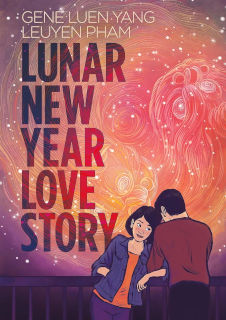
This is a tribute to Asian families, cultures, and roots, lovingly rendered by a writer whose parents are Chinese, and an illustrator who has her roots in Vietnam. Gene Luen Yang is an award-winning graphic novelist and MacArthur Fellow from the US. He tells the story of a teenager Val, who loved Valentine’s Day as a child, but grew to hate it when she realised it held a painful family secret. Convinced by her firecracker of a grandma to attend the celebration of Tet, seen as the most important festival in Vietnamese culture, Val runs into a pair of two cute lion dancers, causing her to revise her view of romance.
However, Val is riddled with inner demons. How do these manifest when the story unfolds?
While Gene Luen Yang’s storytelling is masterful, LeUyen Pham’s illustrations shine through. With colour palettes switching between shades to denote changes in time, to the visuals setting the pace of the story from languid to high drama, the story is a visual treat—equal parts dark and light, like the experiences in our own lives which leave the deepest impression upon us.
♦¤♦¤♦¤♦
I hope these books help make your summer beatific. Happy Reading!


